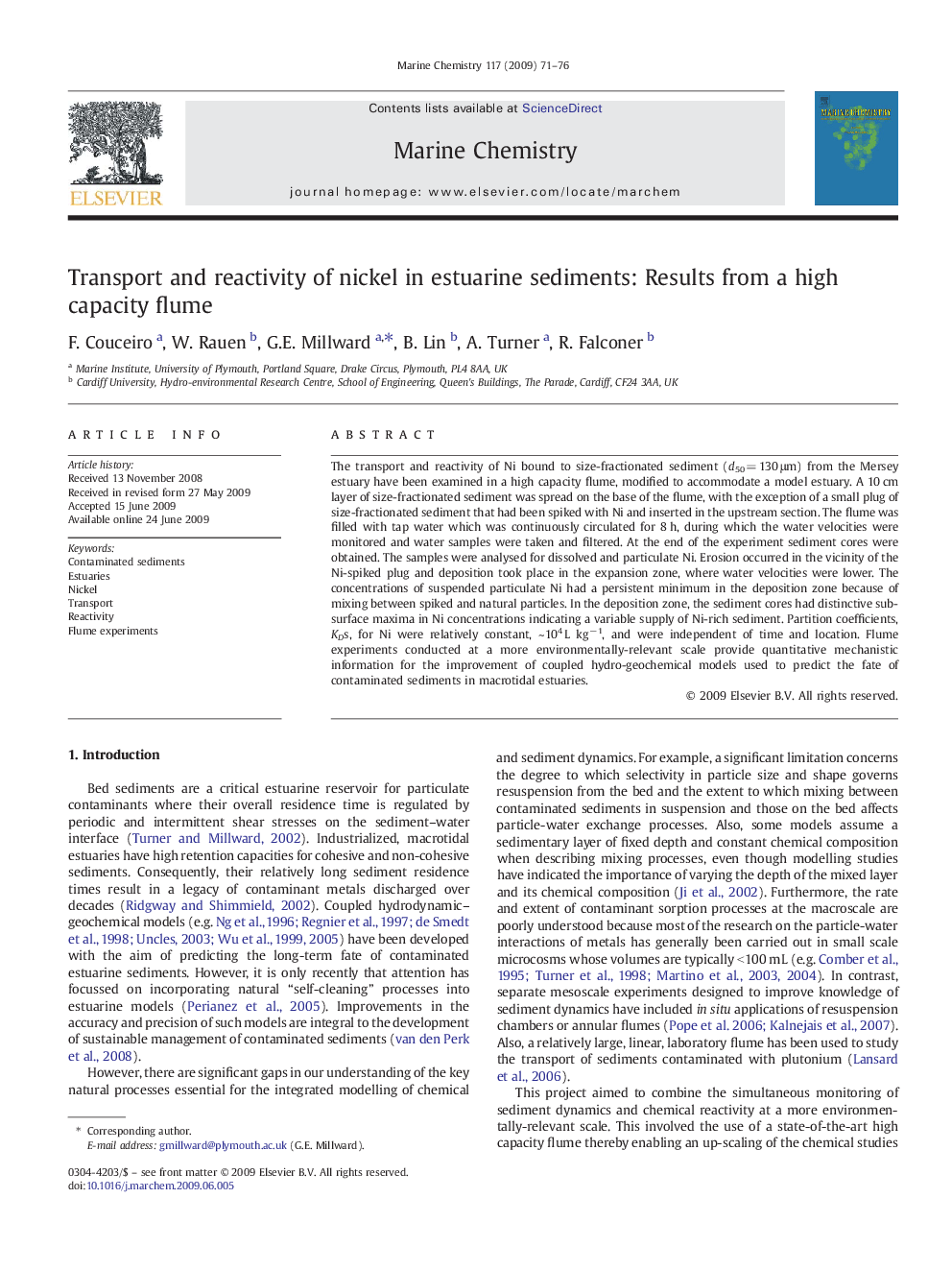| Article ID | Journal | Published Year | Pages | File Type |
|---|---|---|---|---|
| 1263132 | Marine Chemistry | 2009 | 6 Pages |
Abstract
The transport and reactivity of Ni bound to size-fractionated sediment (d50 = 130 μm) from the Mersey estuary have been examined in a high capacity flume, modified to accommodate a model estuary. A 10 cm layer of size-fractionated sediment was spread on the base of the flume, with the exception of a small plug of size-fractionated sediment that had been spiked with Ni and inserted in the upstream section. The flume was filled with tap water which was continuously circulated for 8 h, during which the water velocities were monitored and water samples were taken and filtered. At the end of the experiment sediment cores were obtained. The samples were analysed for dissolved and particulate Ni. Erosion occurred in the vicinity of the Ni-spiked plug and deposition took place in the expansion zone, where water velocities were lower. The concentrations of suspended particulate Ni had a persistent minimum in the deposition zone because of mixing between spiked and natural particles. In the deposition zone, the sediment cores had distinctive sub-surface maxima in Ni concentrations indicating a variable supply of Ni-rich sediment. Partition coefficients, KDs, for Ni were relatively constant, ~ 104 L kgâ 1, and were independent of time and location. Flume experiments conducted at a more environmentally-relevant scale provide quantitative mechanistic information for the improvement of coupled hydro-geochemical models used to predict the fate of contaminated sediments in macrotidal estuaries.
Related Topics
Physical Sciences and Engineering
Chemistry
Chemistry (General)
Authors
F. Couceiro, W. Rauen, G.E. Millward, B. Lin, A. Turner, R. Falconer,
